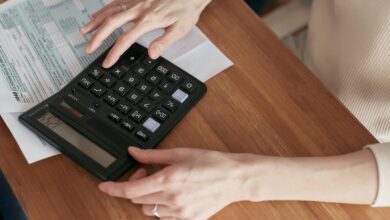How to Build an Emergency Fund Fast: A Comprehensive Guide

Life is unpredictable, and unexpected expenses can arise at any moment. Whether it’s a sudden medical bill, car repair, or job loss, having an emergency fund can be your financial safety net. However, building an emergency fund can feel overwhelming, especially if you’re starting from scratch. The good news is that with the right strategies, discipline, and mindset, you can build an emergency fund quickly. In this guide, we’ll walk you through step-by-step methods to fast-track your savings and secure your financial future.
Why Is an Emergency Fund Important?
Before diving into how to build an emergency fund, let’s first understand why it’s so crucial. An emergency fund serves as a buffer between you and financial hardship. Without one, you may find yourself relying on credit cards or loans to cover unexpected expenses, which can lead to debt spirals and financial stress. Here are some key reasons why an emergency fund is essential:
- Protects Against Job Loss: If you lose your job, an emergency fund can cover your living expenses while you search for new employment.
- Covers Unexpected Expenses: Medical emergencies, home repairs, or car breakdowns can happen without warning.
- Reduces Financial Stress: Knowing you have a safety net allows you to focus on other aspects of life without constant worry.
- Prevents Debt Accumulation: With an emergency fund, you won’t need to borrow money when crises strike.
Experts recommend saving 3 to 6 months’ worth of living expenses in your emergency fund. While this may seem like a lofty goal, there are ways to accelerate the process.
Step 1: Assess Your Current Financial Situation
The first step in building an emergency fund is understanding where you stand financially. Take a close look at your income, expenses, and existing savings. Ask yourself these questions:
- How much do I earn each month?
- What are my fixed monthly expenses (rent/mortgage, utilities, groceries, etc.)?
- Do I have any unnecessary spending habits that I can cut back on?
Create a Budget
A budget is your roadmap to financial success. Use tools like spreadsheets or budgeting apps (e.g., Mint, YNAB) to track your income and expenses. Categorize your spending into essentials (needs) and non-essentials (wants). Identify areas where you can reduce costs and redirect those funds toward your emergency savings.
Step 2: Set a Realistic Savings Goal
While saving 3 to 6 months’ worth of expenses is ideal, it’s okay to start small. Begin by setting a realistic short-term goal, such as saving $1,000 or covering one month’s worth of expenses. Once you reach this milestone, you can gradually increase your target.
Calculate Your Monthly Expenses
To determine how much you need in your emergency fund, calculate your average monthly expenses. Include housing, food, transportation, insurance, and other necessities. Multiply this amount by 3 or 6 to estimate your ultimate goal.
For example:
- Monthly expenses: $2,500
- Emergency fund goal (3 months): $7,500
- Emergency fund goal (6 months): $15,000
Breaking down your goal into smaller chunks makes it more manageable and less intimidating.
Step 3: Open a Dedicated Savings Account
It’s important to keep your emergency fund separate from your regular checking or savings account. This ensures that the money remains untouched unless absolutely necessary. Consider opening a high-yield savings account, which offers better interest rates than traditional accounts. Some popular options include:
- Ally Bank
- Marcus by Goldman Sachs
- Capital One 360
These accounts not only protect your money but also help it grow over time.
Step 4: Cut Unnecessary Expenses
One of the fastest ways to build an emergency fund is to cut back on non-essential spending. Evaluate your lifestyle and identify areas where you can make temporary sacrifices. Here are some ideas:
- Dining Out: Limit eating out and cook meals at home instead.
- Subscriptions: Cancel unused subscriptions (streaming services, gym memberships, etc.).
- Shopping: Avoid impulse purchases and stick to a shopping list.
- Transportation: Opt for public transit, carpooling, or biking instead of driving.
Redirect the money you save from these cuts directly into your emergency fund.
Step 5: Increase Your Income
If cutting expenses isn’t enough, consider finding ways to boost your income. There are numerous side hustles and freelance opportunities available today. Here are some ideas:
- Freelancing: Offer skills like writing, graphic design, or web development on platforms like Upwork or Fiverr.
- Gig Economy Jobs: Drive for Uber/Lyft, deliver food with DoorDash/Uber Eats, or rent out a room on Airbnb.
- Sell Unused Items: Declutter your home and sell items you no longer need on eBay, Facebook Marketplace, or Poshmark.
- Part-Time Work: Take on a part-time job during evenings or weekends.
Every extra dollar you earn should go straight into your emergency fund.
Step 6: Automate Your Savings
Automation is a powerful tool for building an emergency fund quickly. Set up automatic transfers from your checking account to your savings account each payday. Even small amounts add up over time. For instance, if you automate $100 per week, you’ll have $400 saved in just one month.
Many banks allow you to set up recurring transfers, making it easy to stay consistent with your savings goals.
Step 7: Take Advantage of Windfalls
Unexpected windfalls, such as tax refunds, bonuses, or gifts, can give your emergency fund a significant boost. Instead of splurging on luxury items, allocate these funds directly to your savings. Treat windfalls as opportunities to accelerate your progress.
Step 8: Stay Motivated and Track Progress
Building an emergency fund requires patience and perseverance. To stay motivated, celebrate small victories along the way. For example, reward yourself (without spending too much!) when you hit milestones like $500, $1,000, or $5,000.
Use visual aids like charts or apps to track your progress. Seeing how far you’ve come can inspire you to keep going.
Common Mistakes to Avoid
While building your emergency fund, steer clear of these common pitfalls:
- Using the Fund for Non-Emergencies: Only dip into your emergency fund for true emergencies, not vacations or shopping sprees.
- Not Having a Clear Goal: Without a specific target, it’s easy to lose focus and abandon your efforts.
- Keeping the Money in a Checking Account: Low-interest accounts won’t help your savings grow.
- Giving Up Too Soon: Building an emergency fund takes time, so don’t get discouraged if progress feels slow.




